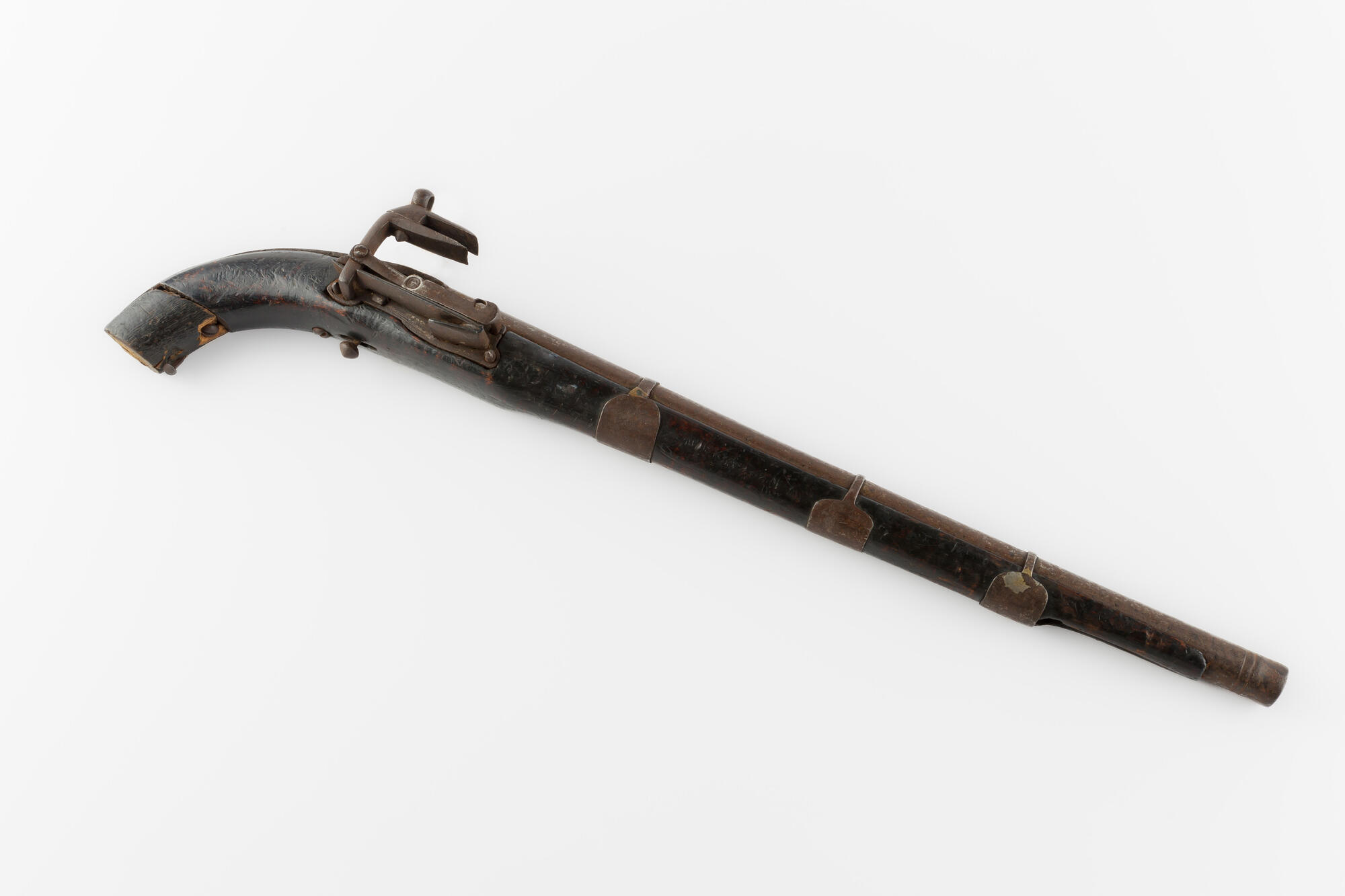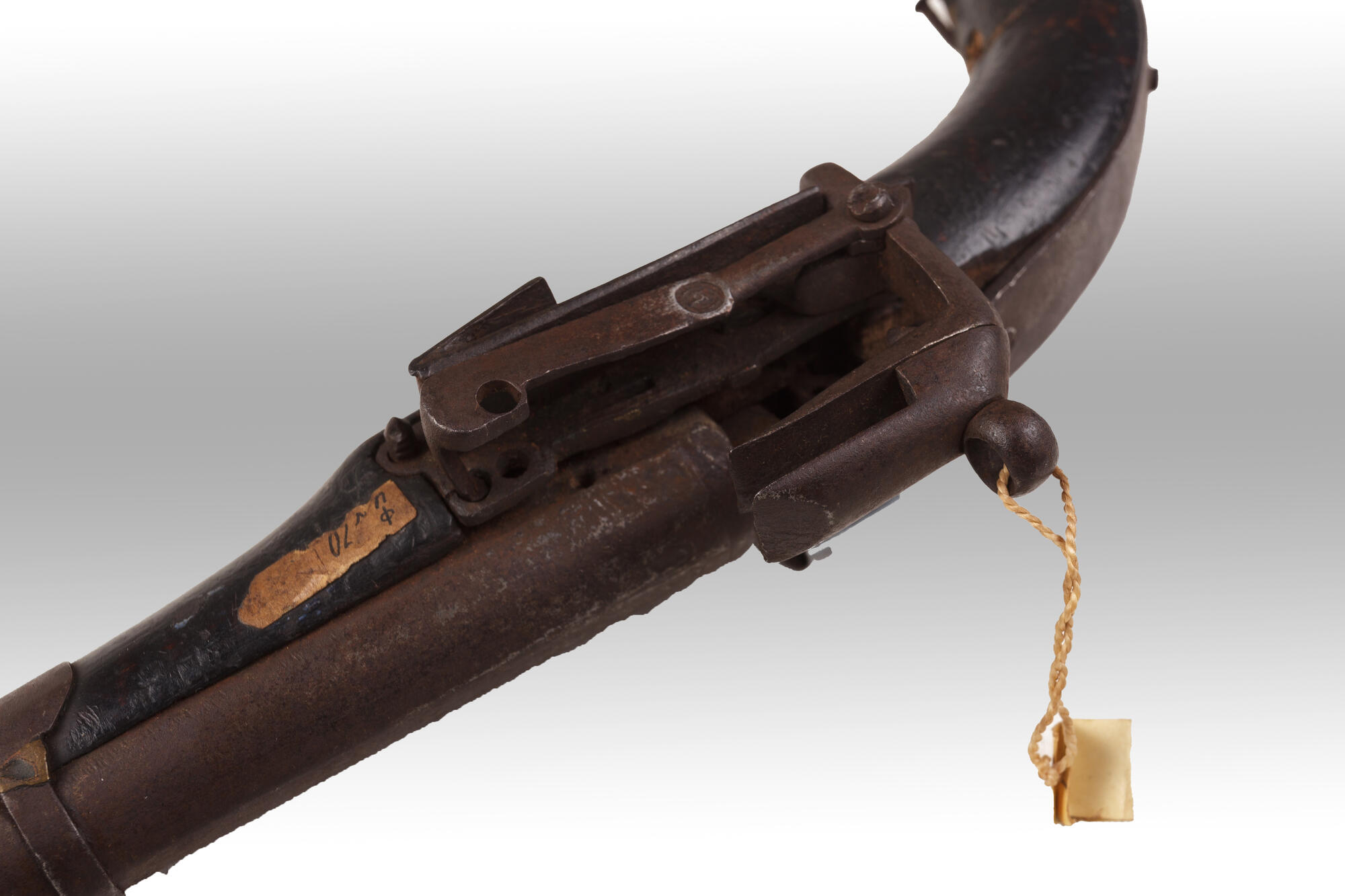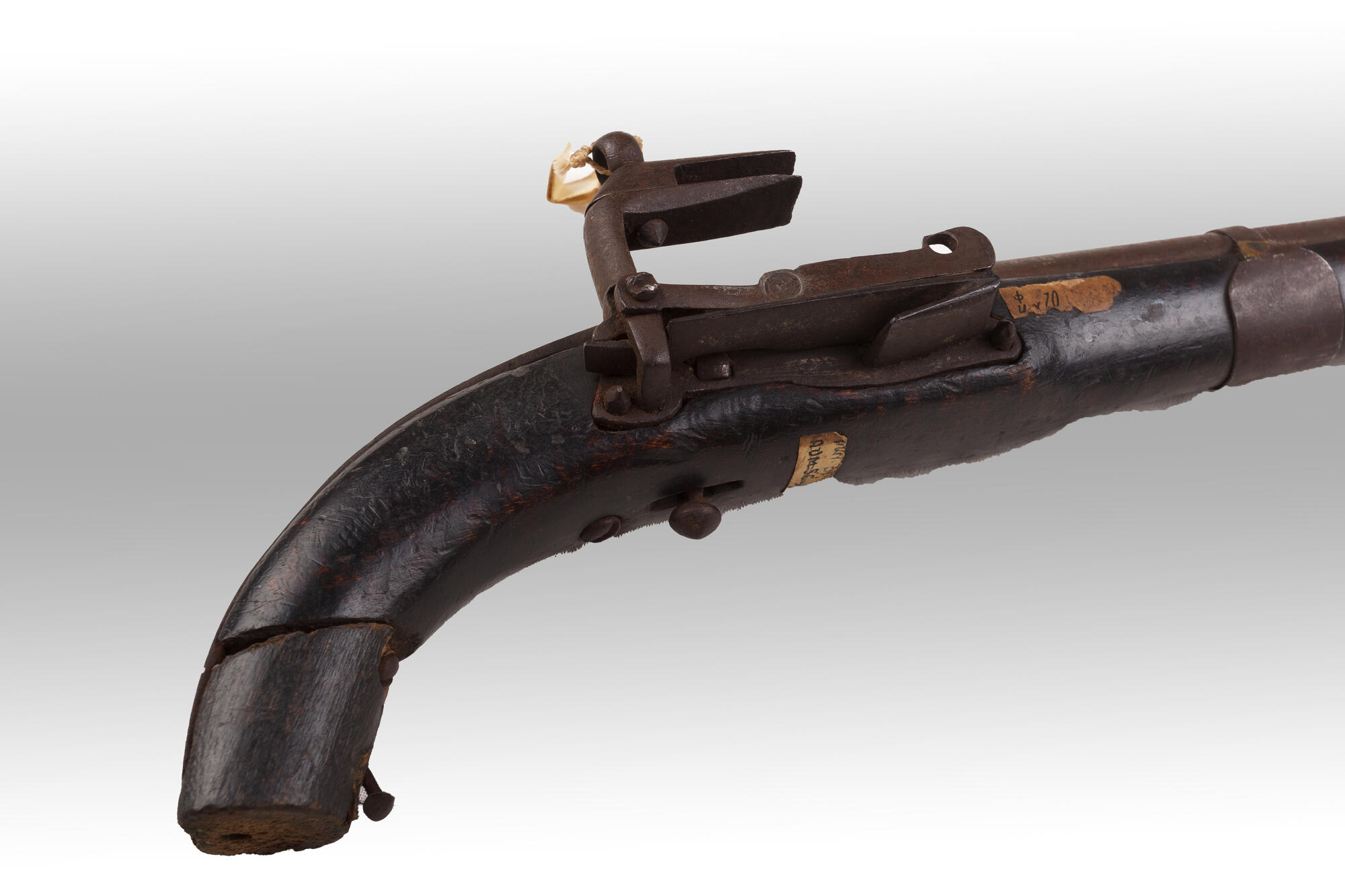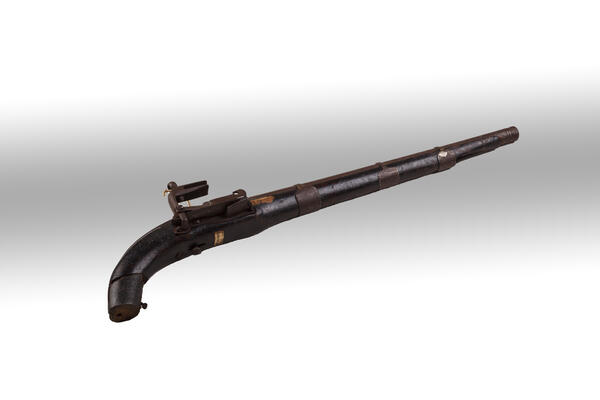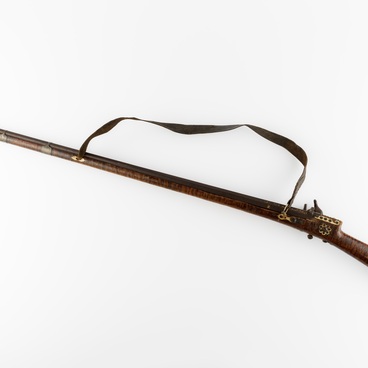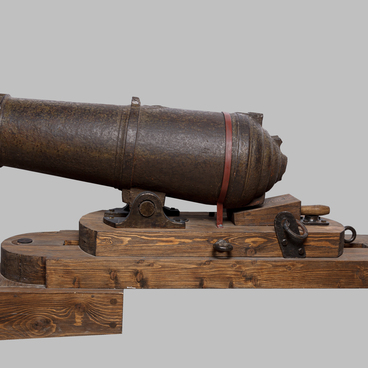A pistol was one of the auxiliary weapons of a Circassian warrior.
The first pistols that appeared in the 15th century were bulky and inconvenient. They consisted of a short barrel mounted on a wooden block, and the gunpowder was ignited with a wick. In general, the pistol of that period differed from the gun mostly in size and weight. A pistol was created in order to equip equestrians with firearms: an infantryman could handle a gun, but it was very difficult for a rider, especially since the process of loading a gun was so complicated.
Later on, pistols would change in parallel with other types of firearms. One of the improvements in the design of the pistol was made by Leonardo da Vinci — it was a wheel-lock that was wound up with a key. It is noteworthy that it was the only invention of the great scientist and inventor that received lifetime recognition.
The range and accuracy of a pistol were inferior to those of a rifle and depended on the model of the pistol. Many versions of this weapon were developed; they were suitable for various purposes: from short-barreled pistols for point-blank fire to long-barreled ones with the range of 30–40 meters. Reloading the pistols was complicated, the fire range was relatively short, so the pistol was more of a secondary weapon for the Circassian warriors. Nevertheless, since the weapon was small, a warrior could carry several loaded pistols and use them at medium and short distances.
The museum exhibits a Caucasian handmade smoothbore pistol, with a flintlock and a caliber of 11 mm. It was transferred to the museum from the Adyghe Regional Museum of Local Lore in 1971. Such a pistol was popular among the Circassians, especially among representatives of the feudal aristocracy. It has a thin wooden stock, which, like the forearm of guns, was made mainly of walnut. The flintlock is similar to that of a rifle but smaller. The barrel is quite long, and has no rifling or sights. It is attached to the stock and the handle with three hoops — ferrules and a shank.
The first pistols that appeared in the 15th century were bulky and inconvenient. They consisted of a short barrel mounted on a wooden block, and the gunpowder was ignited with a wick. In general, the pistol of that period differed from the gun mostly in size and weight. A pistol was created in order to equip equestrians with firearms: an infantryman could handle a gun, but it was very difficult for a rider, especially since the process of loading a gun was so complicated.
Later on, pistols would change in parallel with other types of firearms. One of the improvements in the design of the pistol was made by Leonardo da Vinci — it was a wheel-lock that was wound up with a key. It is noteworthy that it was the only invention of the great scientist and inventor that received lifetime recognition.
The range and accuracy of a pistol were inferior to those of a rifle and depended on the model of the pistol. Many versions of this weapon were developed; they were suitable for various purposes: from short-barreled pistols for point-blank fire to long-barreled ones with the range of 30–40 meters. Reloading the pistols was complicated, the fire range was relatively short, so the pistol was more of a secondary weapon for the Circassian warriors. Nevertheless, since the weapon was small, a warrior could carry several loaded pistols and use them at medium and short distances.
The museum exhibits a Caucasian handmade smoothbore pistol, with a flintlock and a caliber of 11 mm. It was transferred to the museum from the Adyghe Regional Museum of Local Lore in 1971. Such a pistol was popular among the Circassians, especially among representatives of the feudal aristocracy. It has a thin wooden stock, which, like the forearm of guns, was made mainly of walnut. The flintlock is similar to that of a rifle but smaller. The barrel is quite long, and has no rifling or sights. It is attached to the stock and the handle with three hoops — ferrules and a shank.
